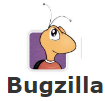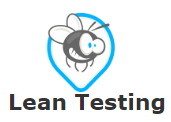Updated March 18, 2023
Introduction to Defect Tracking Tools
Defect Tracking Tools are mainly used to track defects through every step of the defect life cycle in the software development process. A defect is a divergence from the client’s requirements in any form or shape that should be corrected before implementing and delivering the product to the client. Defects go through various stages that need to be taken care of, and these tools help achieve that. Some of the popular tools used for this purpose are Mantis, JIRA, Basecamp, Teamwork Projects, Redbooth, Asana, etc.
Types of Defect Tracking Tools
Defect tracking tools report and track the bugs found during software testing. Here are some of the common tools:
1. Bugzilla
Bugzilla is a well-established tool that helps testers to report and track bugs. Also, it helps mark and manage bug issues and requests for enhancements.
Pricing:
Bugzilla is open-source and free to use. However, some organizations may choose to purchase the paid version for additional features and support.
Features:
- Advanced Search: Bugzilla has advanced search capabilities that allow users to search for bugs using the full text of the bug report. One can also customize the tool to meet the user’s specific search requirements.
- Email Notification: Bugzilla offers email notifications to users, informing them of any changes made to the bugs they are tracking, such as comments or updates.
2. JIRA
JIRA is a software development tool from the Australian company Atlassian and was initially an incident management tool. The tool now includes features for recording, reporting, and managing bugs.
Pricing:
JIRA offers a free trial version, after which users can purchase a license.
Features:
- Customized Dashboard: JIRA offers a customized dashboard that can be tailored to meet the user’s requirements.
- Agile Support: JIRA dashboards can support agile methodologies and can be extended to include support for Kanban boards.
- Rich API’s: JIRA offers rich APIs that can be used for automation
- Mobile Apps: JIRA provides for mobile apps, thus making defect tracking easy. One can track the bugs on mobile itself.
- Extensible Plugins: JIRA allows for integration with various third-party apps for better usage.
3. eTraxis
eTraxis is another popular tracking tool for reporting and tracking defects. However, it can also be helpful to track other software development-related things.
eTraxis has the ability to customize the defect-solving process or the defect life cycle. Users can define their own sets of defect-solving cycles, or templates, to track defects and ensure they are being resolved according to a custom-defined life cycle.
4. Lean Testing
Lean Testing is a free defect tracking and test case management tool. As a test case management tool, it enables users to describe test cases for specific software development tasks.
Lean Testing provides access via both web and mobile. Users can install a browser extension to use it on the web, and they can report and track defects from their mobile devices. Lean Testing is user-friendly and does not require the installation of any additional software.
Fundamental Features of a Defect Tracking Tool
Some fundamental features are as follows:
- Reporting facility: The tool must have a reporting facility that allows testers to log a bug with additional details such as its environment, severity, attachments, etc.
- Assigning: It should have a feature that enables the tester to assign the bug to the concerned person for fixing, and also track it.
- Tracking bug different life cycle: A bug goes through different stages once it is logged. An ideal defect-tracking tool should have different stages with clear descriptions of each stage.
- Maintaining logs: An ideal defect tracking tool must be able to maintain logs of different things like user comments, any additions to the bug description, etc.
- Providing a unique id: Each bug reported using this tool should be automatically assigned a unique ID. This unique ID helps track bug information.
Conclusion
Software development demands constant maintenance and quality checks. It is of paramount importance to identify and report any defects discovered during the testing phase of software development. To efficiently log and track these issues, software testers require reliable tools known as defect tracking tools. These powerful tools not only help to track defects but also aid in maintaining software and its documents.
Recommended Articles
Here are some further related articles for improving understanding:






